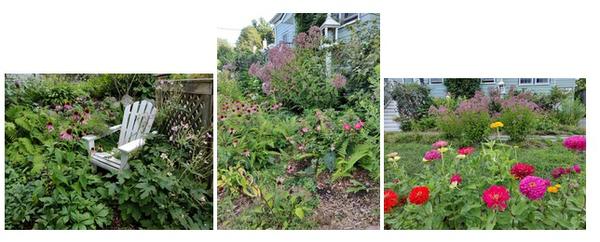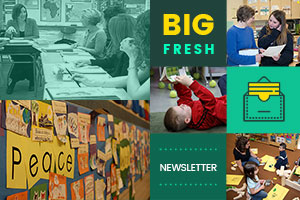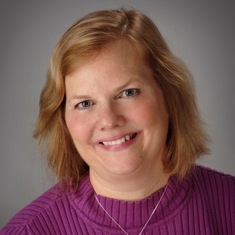
I was away from home and realized I needed a photo of my garden for an upcoming blog post. I texted my neighbor who loves photography for help, and within an hour, I had three photographs of my garden in hand.
As I stared at these pictures, I couldn’t believe what I saw. Instead of seeing unruly weeds, flowers that needed dead-heading, or plants crowding out more fragile ones, I saw a beautiful garden—a peaceful place that looks like it receives attention and care. This moment made me realize that I need to spend more time admiring, and less time fixing. My garden isn’t a “to-do” list. I created it so our family could enjoy it together.
I realize this happens at school too. When I walk into someone else’s classroom, I notice the classroom community the teacher and students have created. I see the recent read alouds, the student-created charts, and the student artwork that covers the walls. As I get ready to teach, the kids tell me how things work.
“Our reading bags are over here.”
“Before we begin reading workshop, we set up our spaces and choose what we want to read.”
“I sit up here so I can see the chart.”
Their directions show how empowered they feel and how proud they are of their classroom community.
When your school “to-do” list feels long, please take a moment to notice what you and your students have created together. Notice how your children listen as you read aloud, the productive buzz during writing workshop, and how excitement builds as students share the books they are reading. These noises and silences tell a beautiful story with moments to cherish.
I’ve been doing the same thing throughout the fall when I’ve arrived home from work. I walk through the garden and notice its beauty—the flowers, the birds, and the way it all works together. If we take a little time to notice the beauty of what we’ve worked hard to create, perhaps our to-do lists will feel a bit shorter.
This week we look at the power of pausing to reflect and celebrate. Plus more as always—enjoy!
Tammy Mulligan
Contributor, Choice Literacy
Tammy Mulligan co-authored It’s All About the Books and Assessment in Perspective with Clare Landrigan. At work, you can find her teaching and thinking alongside elementary teachers and kids. On other days, she is in her garden, hiking in the woods, or hiding behind a pile of children’s books. Connect with Tammy on Twitter @TammyBMulligan

Brian Sepe develops a simple reflection checklist to plan next steps, calm his mind, and transition from school to home.
Andrea Smith builds reflection into whole-class discussions in her fourth-grade classroom by beginning an anchor chart with four different illustrations from the covers of a read aloud.
Pernille Ripp shares the questions she asks mid-fall to help students reflect on their place in the classroom community, and to help her understand each student more deeply.

New members-only content is added each week to the Choice Literacy website. If you’re not yet a member,click here to explore membership options.
Want students to become more independent? Melanie Meehan recommends that you take each student through a reflective process to figure out what learning strategies and habits work for them.
Norms are a powerful tool for helping students reflect throughout literacy workshops on whether their actions are helping or hindering the classroom community. In this quick video, Dana Murphy shows how she leads her fifth graders with a kinesthetic reminder of these norms before beginning independent work.
Mark Levine explains why whole-class reflection is an essential component of his middle school workshops.
In an encore video, Christy Rush-Levine helps her eighth-grade students launch the work period with a reflective question that sets a tone for productivity, and then returns to it throughout the morning during transition times.

Lead Literacy now has a new home as the Leaders Lounge at Choice Literacy. We’ll be posting the new content updates here in the Leaders Lounge section of the Big Fresh newsletter.
Reflection time is essential for literacy coaches. Cathy Mere shares practical tips for how she builds that time into her work with literacy coaches.
Vision boards are a marvelous way to help teachers and coaches reflect in positive ways on their professional goals and passions. Stephanie Affinito explains how she helps colleagues create them.
Reflection may be crucial for sustaining success. Researcher Patrick Kiger explains the value of cultivating a “journey mindset” rather than achieving a goal and moving on.
Quote It:
Never regret. If it’s good, it’s wonderful. If it’s bad, it’s experience. Eleanor Hibbert
That’s all for this week!



